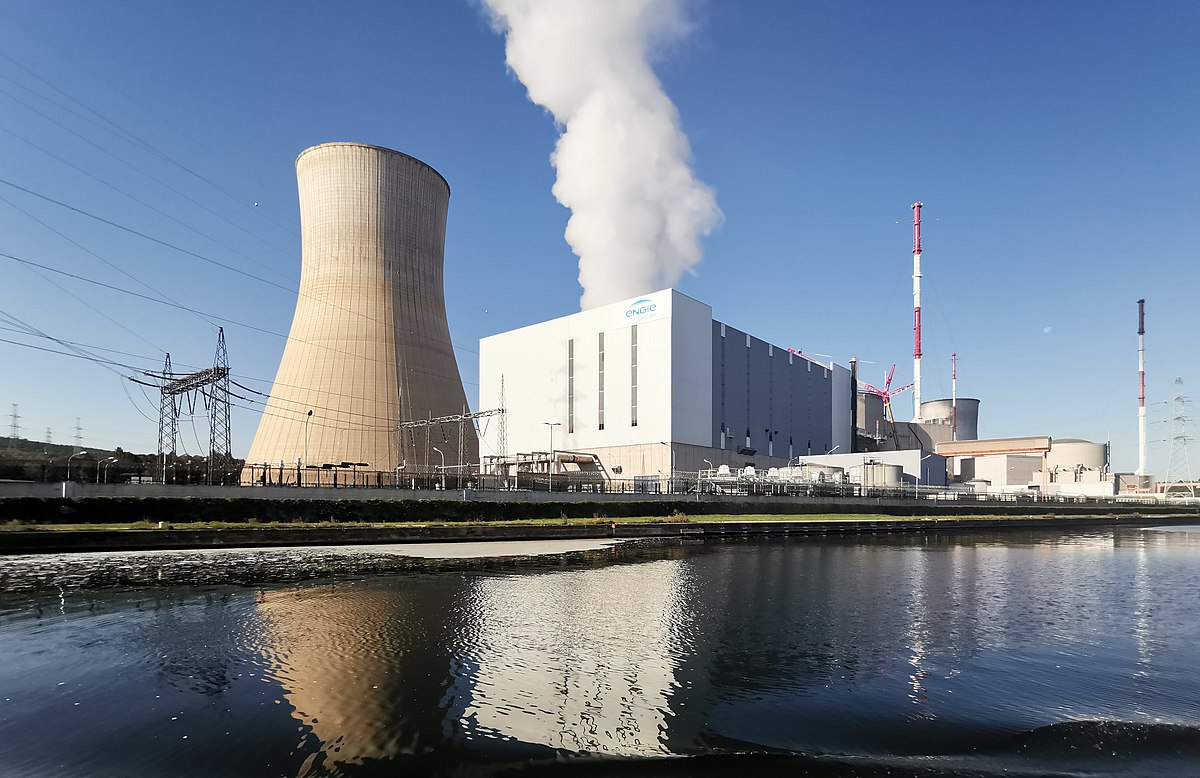The winter package, i.e. the EU energy market reform, has been submitted to Prime Minister Beata Szydło. Prior to that, it was discussed at a European Council meeting on 15 December 2016. The debate focused on the widely covered article 23, paragraph 4, included in the draft of the „Regulation (…) on the internal market for electricity” (IME). The article restricts public support offered through capacity market mechanisms for new installations, i.e. generation capacities for which an investment decision, namely a closed construction tender, has been made before the regulation enters into force on 1 January 2020, and which emit less than 550g CO2/kWh. This excludes coal power plants – writes Christian Schnell, Jagiellonian Institute expert.
The new regulation does not encompass new blocks in the Opole, Kozienice, Jaworzno, Turów and Ostrołęka power plants, it pertains only to future investments that will first need to acquire environmental decisions. It should be noted that as of the 1st of January 2025, the regulation will restrict support through capacity markets mechanisms for all installations that emit more than 550 gr CO2/kWh. The next decade expects low prices on the wholesale market, which makes the profitability of coal power plants owned by Polish concerns highly questionable.
Winter package volume targets
The winter package is also significant for the development of the renewable energy market in Poland. Below I will summarize the most important issues pertaining to the sector that stem from the new Renewable energy directive, i.e. the „Directive (…) on the promotion of the use of energy from renewable sources” (RED), from the draft of the new “Regulation (…) on the governance of the Energy Union” (GOV regulation), as well as the IME regulation.
The EU’s energy and climate targets are based on the European Council’s Conclusions adopted in October 2014, which set the following binding and indicative EU targets for 2030: CO2 emission reduction by 40%, share of renewable energy in energy mix at 27%, energy efficiency improvement by 27%, and a maximum possible increase in electricity trading – 15%. The package’s priorities include the “efficiency first” rule, industrial policy – EU states should become global leaders in green technology, and a balanced offer for energy consumers, i.e. strengthening the consumer’s role. In 2030 half of EU’s electricity should be generated from renewable sources (currently it is about 30%), in total 72% of electricity should be produced without fossil fuels and in 2050 the entire energy sector in the EU should stop producing carbon dioxide. EU industry’s carbon footprint should drop in 2030 by 57% in comparison to 2015. The Commission’s goal is to invest EUR 177 billion annually as of 2021, to achieve the 2030 targets. This means Poland will spend EUR 5.3 billion a year, which is about 3% of its GDP. EC expects that this will lead to an annual 1% GDP increase and create 900 thousand new jobs.
New Governance Regulation
The Energy Union’s new and vital pillar is the GOV regulation, which has a completely new form. The remaining elements of the winter package are in essence amendments to earlier legal documents. Governance of the Energy Union through the GOV regulation that will enter into force on 1 January 2021 and will be binding to all member states, is based on integrated energy and climate plans of member states (ECP), yearly reports on the ECP progress and annual monitoring reports issued by the Commission.
Energy and climate plans and consequences of not delivering on targets
The Energy Union and reports encompass five connected sectors:
(1) supply security,
(2) implementation of an internal Energy Union market,
(3) energy efficiency,
(4) decarbonization –CO2 reduction and renewable energy participation,
(5) R&D, innovation and competitiveness
What’s next
The ECPs have to be consulted with the public and the neighboring member states. Such a plan encompasses, among others, the national renewable energy target including its linear growth (Poland’s renewable energy target for 2020 expects progressive growth), national renewable energy targets for specific sectors, i.e. electricity, heat and transportation as well targets for individual renewable energy technologies. The ECP has to be presented to the Commission for consultations by 1 January 2018 and by 1 January 2019, the 2021-2030 ECP has to be notified, while the Commission will verify if the plans are sufficient to meet the EU’s 2027 target.
The plan is an element of enforced EU law, which means it is also part of an ex-ante assessment, before the payout of EU funds. The update of an ECP is permitted on 1 January 2023, or 1 January 2024, but the amendments need to make the plan more ambitious. By 15 March 2021, and later on, every two years, each member state will be obliged to present a progress report on the ECP, which by 31 October 2021 and every two years thereafter, will be subject to the Commission’s assessment.
If a member state does not implement the linear ECP in 2023, and if it does not meet its target by 2020, or the so-called baseline scenario, in accordance with article 24, paragraph 4 of the GOV regulation, it will need to make a “financial contribution” to a “financing platform set up at Union level”, which will finance energy and climate investments, whereas the financing rules will be set out in a future delegated act. In accordance with this regulation, the member state may use its revenue from selling its emission allowances as the financial contribution. While the above financial support will be made available if the 2020 target is not achieved, missing the 2023 ECP target may lead to a fine in 2024. Alternatively, it can enforce an agreement on more ambitious targets with relation to using renewable energy sources in heating and cooling sectors, as well as transportation, or to “other activities” that would expand renewable energy installations.
The Updated Renewable Energy Directive
The updated Renewable energy directive (RED) has to be implemented into the Polish legal system by 1 January 2021. Renewable energy sources are to be supported through, inter alia, financial instruments, i.e. EU funds that will reduce the cost of renewable energy projects. An important part of the Directive is the 2030 EU target that is to be implemented through the ECPs, while the 2020 renewable energy target will remain a baseline for further actions. The RES is tightly linked to the GOV regulation.
In accordance with the Directive, every kind of support for such technologies constitutes public assistance, which should be granted on the basis of competitive rules (i.e. auction system) in a transparent, open way without discrimination and with cost effectiveness in mind. The Directive does not stipulate more concrete rules of support. Therefore, the Directorate-General for Competition will be the main institution that will shape the support for renwables on the basis of the above guidelines. The RED also explains that legislative action will not be allowed to interfere with support that has been already granted, this pertains to the rule that the law is not retroactive.
Auctions for new installations are to be open for bidders from other member states at a minimum of 10% between 2021 and 2025 and at 15% from 2026 to 2030. The member states will need to sign a cooperation agreement that will determine, inter alia, the issue of paying out support to foreign producers of energy from renewable sources. Member states will be able to choose whether they will hold joint or separate auctions for national and foreign producers. However, it is unclear whether the requirement of physical import and reciprocity will still be allowed in accordance with the latest version of the renewables act (or, e.g. with the German EEG act).
The RED also requires member states to create single administrative contact points for administrative proceedings with regard to the development of renewable projects in the electrical energy or heating/cooling sectors, and also for expansion of network infrastructure. This is done to make sure that the proceedings do not take longer than 3 years, or one year in case of repowering. For installations of up to 50 kW and for repowering (with certain exceptions), the proceeding together with an announcement will be obligatory. Member states will be obliged to publish three-year plans to increase the transparency of support for renewable energy. The plans will outline the entire budget, annual budgets, schedule for every single action, i.e. technological baskets.
Biomass as a renewable resource
The new definition of a renewable energy installation excludes support for large (co)incinerating biomass installations in power plants. The change was prompted mostly because of the “over-support” for the DRAX power plant, which is the biggest plant in Great Britain. In April 2014, three months before the new EC guidelines on state help for environmental protection and targets related to energy between 2014-2020 (EEAG guidelines) entered into force, the plant received a contract for difference of GBP 105/MWh by 2027, for two biomass boilers with a generating capacity of 1260 MW. The installation needs 5 billion tones of biomass annually, it is imported mostly from North and South America in the form of wood pellets. Today, Poland has an untapped potential when it comes to biomass crops, but it is estimated that the biomass resources would be enough to cover the demand of units that generate only 50 MW, and it would be impossible to deliver the fuel to bigger energy units.
In accordance with the new Renewable energy directive, a new installation with at least 20 MW capacity, that uses solid biomass will qualify as a renewable energy installation only if it offers high-efficiency cogeneration that allows to fully utilize the valuable fuel. In case of renewable energy installations that produce energy from biomethanol, i.e. liquid biomass, this requirement will be applicable to installations with a capacity from 0.5 MW. Therefore, it can be concluded that the new EEAG guidelines, which will enter into force on 1 January 2020, are ahead of the Renewable energy directive, which will be binding as of 1 January 2021. This means it will be impossible for the so-called simple co-incineration in power plants to qualify as an renewable energy installation and receive additional operation support.
Additionally, in existing installations with up to 20 MW capacity (solid biomass in high-efficiency cogeneration) or 0.5 MW (liquid biomass in high-efficiency cogeneration), which were opened before 5 October 2015, only 50% of the produced energy will be qualified for lowering CO2 emissions in order to, inter alia, calculate the target in accordance with the ECP. This indicator will be at 80% and 85% for installations opened after 1 January 2021 and 1 January 2026 respectively. One of the consequences of this decision is that large biomass units, e.g. the “green block” in Połaniec, will not be bound by the CO2 reduction targets at all. Moreover, the Renewable energy directive regulates in a peculiar manner the quality criteria and qualification rules for land from which biomass can be harvested.
Renewable energy from heat
The Directive especially supports the development of the cooling/heating sector. Member states must “make an effort” to make sure that renewable energy sources from heating/cooling increase by 1% annually. The member states may, inter alia, introduce the duty to complement a given energy source with a renewable one, i.e. mandatory co-incineration in heat and power stations, duty to develop high-efficiency installations for heating/cooling in cogeneration and/or introduction of a support scheme through certification. It is also expected that these activities will be coupled with promoting energy efficiency, e.g. supporting energy efficiency to develop high-efficiency cooling/heating production installations. The updated act on energy efficiency already fulfills those requirements and the Renewable energy directive draft indicates that the current support scheme for high-efficiency cogeneration can be extended beyond 2018. Additionally, mandatory co-incineration of solid biomass in gas – steam heat and power stations should be approved by the Commission. The Renewable energy directive also regulates third party access to the existing heating networks – the current version of article 116 of the Renewable energy act is in line with this requirement. Operators of distribution networks are obliged to unlock the existing potential when it comes to storing electrical energy, i.e. power to heat and introducing DSR system services.
Updated Regulation on the electricity market (IME)
The IME regulation is also important to the development of the renewable energy sources sector. The EC estimated that about 90% of renewable energy installations are linked with the distribution network. To strengthen the role of distribution networks and simultaneously reduce the need to balance the frequency services and remove disturbances on SPOT markets, i.e. primary, secondary and tertiary markets (which has not been introduced in Poland yet), harmonization is necessary, especially when it comes to gate closure time and related commodities. Renewable energy installations should have access to non-frequency ancillary services, i.e. professional services and activities on the level of the distribution network that enable and support uninterrupted flow of lower voltage electrical energy, so that the supply is constantly in synch with demand, e.g. frequency control, spinning reserves, operating reserves. The so-called aggregator, i.e. „a market participant that combines multiple customer loads, or generated electricity for sale, for purchase or for auction in any organized energy market” should be especially promoted. The duty to balance renewable energy installations, which currently does not encompass installations with capacity under 500kW will encompass all installations with a capacity above 250kW as of 2026.
Abolished renewable energy priority grid access
The renewable energy and high-efficiency cogeneration priority grid access will be abolished. However, installations that will be connected by 2020 should keep their priority status. This change does not seem very serious because the capacity reduction will take place in accordance with market rules, i.e. merit order. Exceptions to this are allowed only if it is impossible to decrease capacity in accordance with market rules (recently the holiday period proved that when it comes to wind farms in Poland, the possibility of reducing conventional capacity sources exists), or if there aren’t enough large energy producing installations in a given region, which can guarantee efficient competitiveness. However, the rule “in accordance with market laws” will not be binding when the exclusion of conventional sources will be caused by “disproportionate costs” or “grid security risk”. A detailed definition of what “disproportionate costs” are does not exist and will be subject of further discussions at EU level. Additionally, the IME regulation stipulates the order of capacity reduction for renewable energy installations and high-efficiency cogeneration whereby prosumer installations should be the last on the list for reduction – it is being discussed why high-efficiency cogeneration installations are to be reduced after renewable energy installations. When it comes to capacity reduction, operators are obliged to provide transparent reports and, more importantly, pay out damages to producers of renewable energy sources or high-efficiency cogeneration at a minimum of 90% of electrical energy sales losses, including the additional support funds. Finally, grid operators have to invest in infrastructure in a way that minimizes capacity reduction risk and renewable energy sources or high-efficiency cogeneration shut downs.
Updated Energy efficiency directive
The Energy efficiency directive (EED) will be updated. The energy efficiency target is 30% and is higher than the European Council’s target from 2014, which was 27%. The annual energy savings target equals to 1.5% of member states’ final gross energy consumption. The obliged parties include, inter alia, energy distributors and retail energy sales companies. The Energy performance of buildings directive will be also updated. In the future, buildings will be equipped with installations that produce electrical energy and technical infrastructure for electric cars.
Fast implementation of the winter package
The interested parties in the EU are ready to quickly implement the winter package, this is especially true for the GOV regulation. Most probably, the EU Parliament will appoint committees and rapporteurs on 12 January. Informal agreements between the Parliament, the Commission and the Council have been made to speed up the legislative process, so that the GOV regulation and the Renewable energy directive will enter into force on 1 January 2018, at least when it comes to the energy and climate plans.








